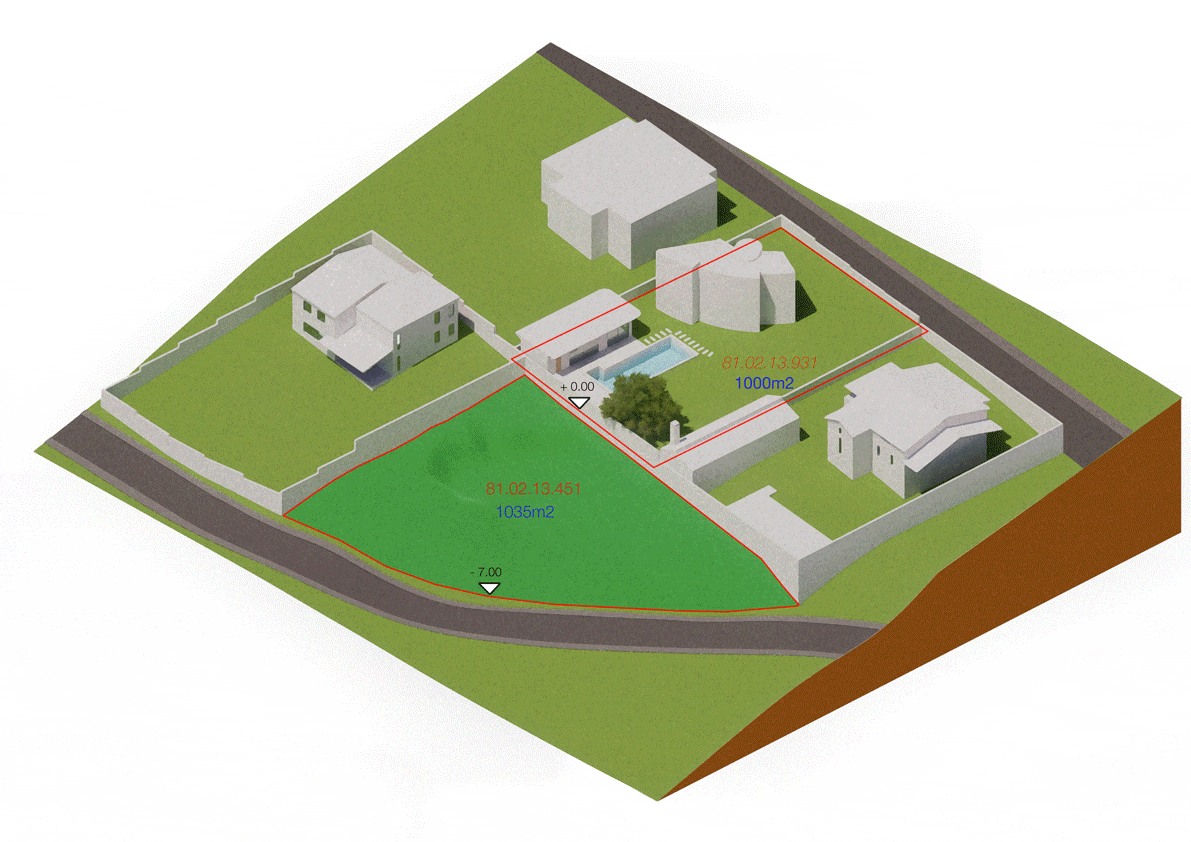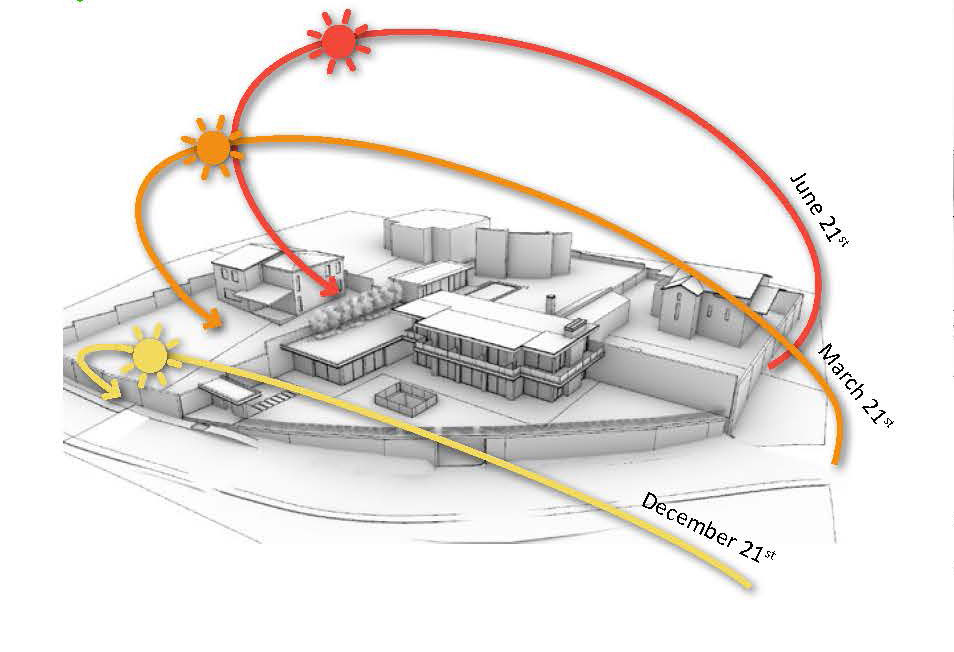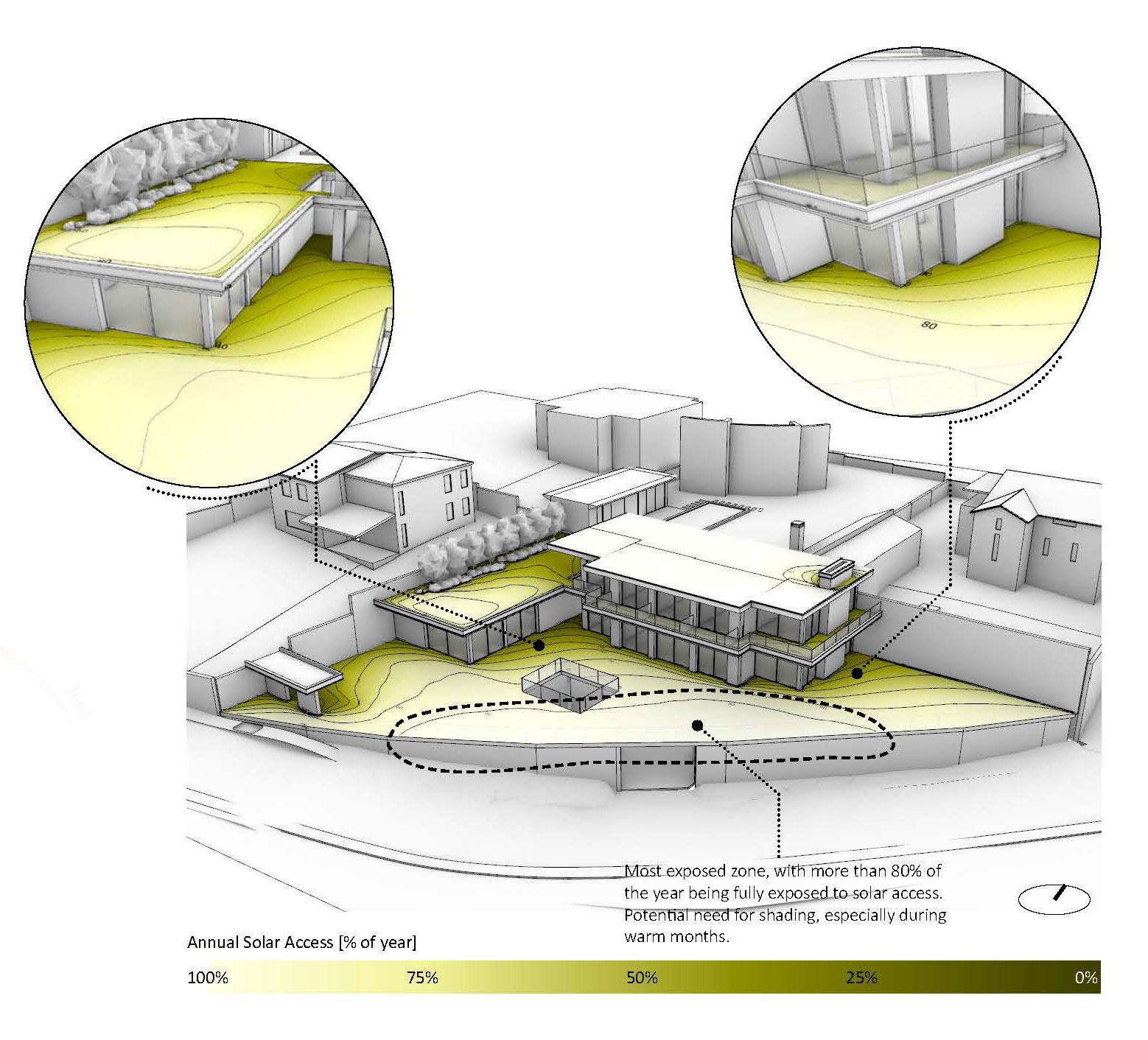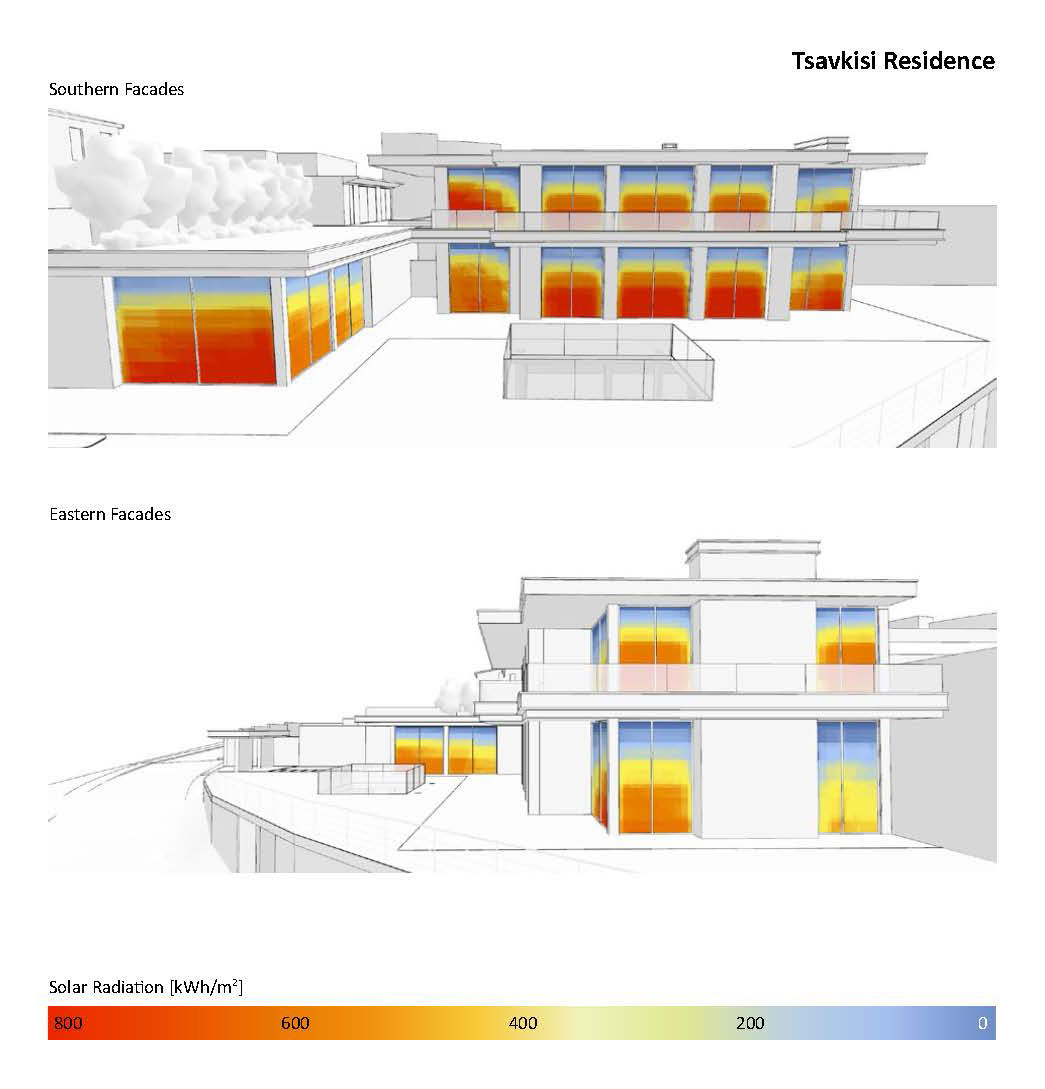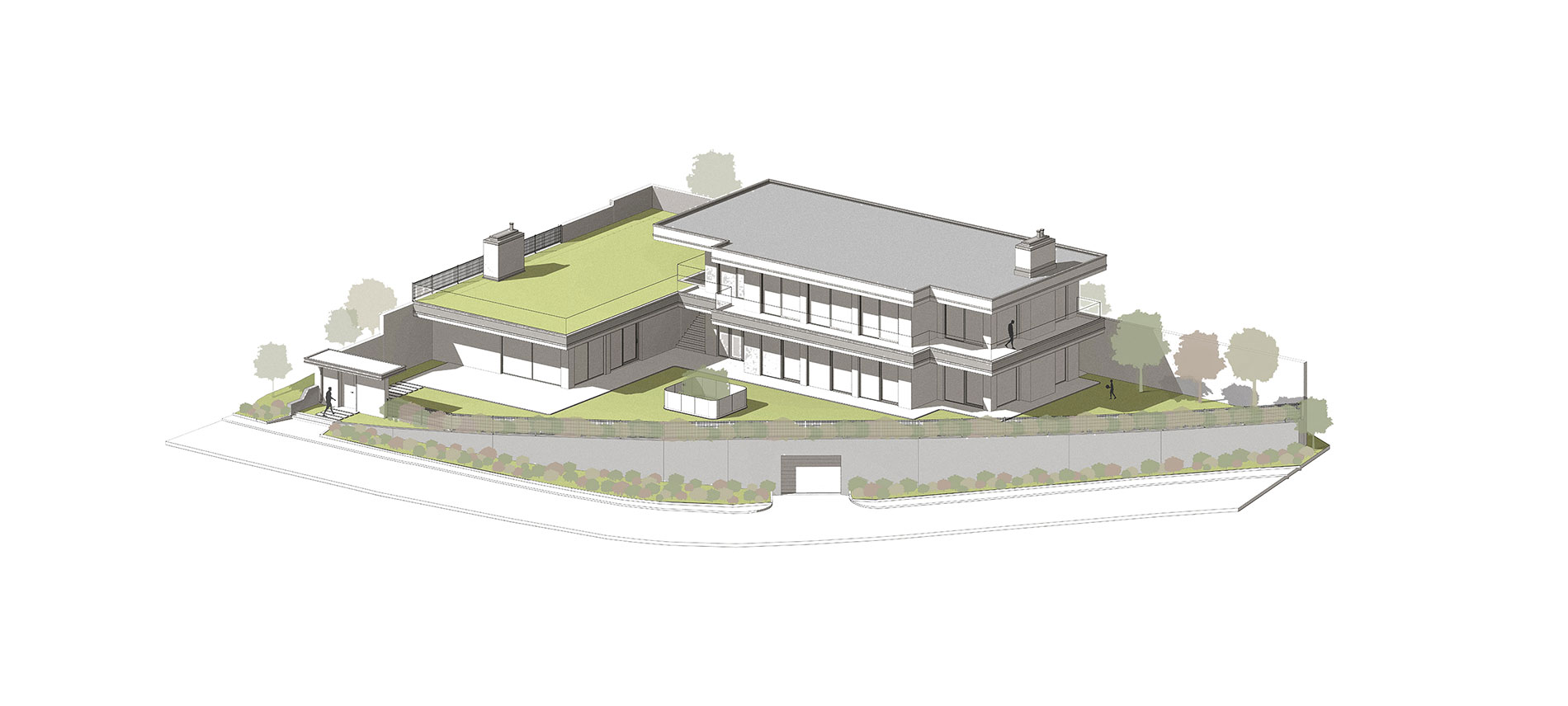Client
Private
Location
Tsavkisi, Tbilisi
Area
900 m2
Year
2023
Stage
Under development
Tsavkisi Villa
The residential house project is situated in Tsavkisi, a mountainous region near Tbilisi, Georgia. As part of the project, environmental monitoring was conducted to assess the land’s properties and understand how the building design would be impacted by prevailing winds and solar radiation. The analysis included wind simulation (CFD) and solar radiation assessment.
The building’s cladding, color scheme, and straight facade seamlessly blend together, resulting in a modern and refined appearance.
During the building’s volume redistribution, several considerations were prioritized:
- Private and Guest Areas Separation: The layout ensures a clear distinction between private and guest spaces.
- Terrace Wind Flow Reduction: Measures were taken to minimize wind impact on the terrace.
- Preserving Rear Building Views: The design maintains views from the rear building, which also belongs to the client.
- Optimizing Terrace and Parking Views: The terrace and parking areas were strategically positioned to maximize scenic views.
Overall, this project exemplifies elegance, functionality, and a strong connection with the natural environment.
CFD Analysis
The direction of the prevailing wind, (NW), aligns with the context buildings. In addition, the design is blocking a lot of the wind from accessing the lower terrace outdoor space, protecting it from excessive wind, especially during winter period, when this wind direction is predominant.
The overshadow analysis illustrates the sum of hours that a surface is exposed to direct solar access or blocked by obstructions.
This analysis has been conducted on all external, accessible surfaces to understand the overall performance of all outdoor areas and identify zones that might be too exposed and potentially require some shading strategy.
In addition, the floors inside the building have been included in the study. This will show the depth of solar penetration in different seasons.
The Solar Radiation analysis show the amount of solar energy that falls on a surface. Typically this is tested against windows, to identify any potential overheating issues.
The annual solar radiation results, illustrate that most south-facing windows, exceed the recommended target at their lower parts. This should not cause any worries as the design of the canopies works in favor of winter solar radiation as shown in the following pages.



